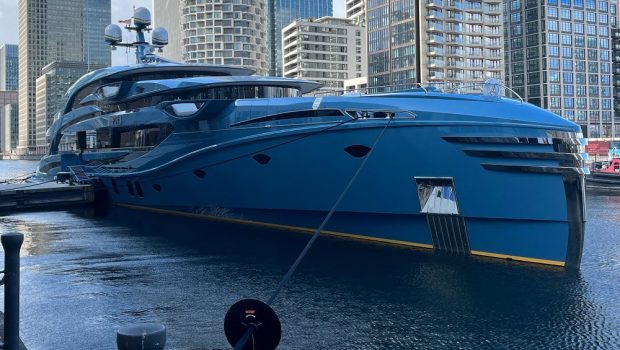Uncharted territory with seized yachts
Published on April 7th, 2022
Amid the atrocities occurring in Ukraine, it has given the public some joy to have obscenely expensive Russian yachts seized by foreign governments enforcing sanctions placed in response to its invasion of Ukraine.
However, that’s only where the story begins as explained by marine surveying and consulting company Van Ameyde McAuslands:
Seized maritime assets could pose a “significant risk” to ports, harbors, and marinas if there is no requirement to ensure mega yachts detained under sanction rules are properly maintained, made safe, or deactivated.
Safety concerns are now the issue following the seizure by port authorities across Europe of a number of high-profile mega yachts thought to be owned by Russian oligarchs.
In London’s Canary Wharf authorities seized the US$38M Phi. The US$75M Axiom was seized in Gibraltar, and in Italy, authorities boarded the $540M S/Y A, one of the world’s largest privately owned yachts.
Yachts thought to be worth more than $16 billion are being held across Europe, in Finland, France, Norway, Spain, and Germany.
“When a vessel is seized it may no longer be in Class and under Flag, and any insurance, including P&I and H&M, is likely to have already been revoked,” says Albert Weatherill, Managing Director, Van Ameyde McAuslands, UK.
“From that moment the yacht, by default, becomes a liability of the state. And without insurance, proper loss prevention measures need to be in place to avoid losses and claims. Potential litigation could run into millions of dollars if assets are not properly made safe or shut down correctly. These are not vessels that can be simply turned off and walked away from.”
Normally, the annual upkeep of a mega yacht can exceed US$50 million, with flag state requirements calling for minimum manning and planned maintenance. But according to the surveying firm, there is confusion over who will be responsible for carrying out routine maintenance if any is being carried out at all.
“If crews are not being paid and walk away or if sanctions prohibit maintenance, what happens if there’s a pollution incident?” asks Weatherill. “What happens if the vessel comes adrift or catches fire, if there’s theft or the vessel is sabotaged? There are too many unknowns, and in this industry, unknowns often equate to litigation.”
Van Ameyde McAuslands believes that seizing authorities – flag states – should be aware of the need to take immediate action when a vessel is impounded. Indeed, it is thought that none of the seized yachts to date have been prepared for lay up or surveyed to prevent pollution or disruption to the port.
“These vessels need to be as safe as possible on the mooring,” says Weatherill. “When vessels are dormant for long periods there is potential for things to go wrong and when there is no insurance safety net to fall back on, it’s a big problem. We’re in uncharted territory.”









 We’ll keep your information safe.
We’ll keep your information safe.